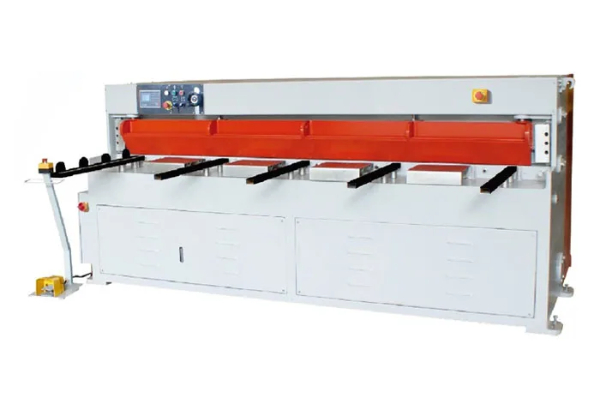
Plate Bender Machine Essentials- Features to Look For
- By:Metmac
- 2024-05-06
- 306
In the realm of metal shaping, plate bending machines reign supreme, transforming flat sheets of metal into intricate forms with precise angles. However, choosing the right plate bender for your project can be a daunting task amidst a plethora of options. To guide you through this metallurgical maze, let’s delve into the essential features that define an exceptional plate bender machine.
1. Ton Capacity: Bending the Metal’s Might
The ton capacity of a plate bender determines its ability to muscle through metal. It represents the maximum force applied to bend the plate. For heavy-duty projects involving thick materials, a higher ton capacity is crucial. Consider the thickness and strength of the metal you’ll be working with to ensure the machine can handle it.
2. Bending Capacity: Defining Angle Limits
The bending capacity determines the range of angles you can achieve with the machine. It specifies the maximum and minimum angles achievable. This feature is crucial if you require precise angles for your project’s geometry.
3. Bend Length: Shaping Larger Dimensions
Bend length refers to the maximum length of the metal plate that the machine can bend at once. This is particularly important for large-scale projects or for bending long, continuous sections. Ensure the bend length meets your project’s specifications.
4. Bed Length: Supporting the Metal’s Weight
The bed length of a plate bender machine determines the length of the metal plate that can be supported during bending. A longer bed length provides ample space for larger plates, ensuring stability and preventing accidents.
5. Ram Adjustment: Precision in Bending Speed
The ram adjustment feature allows you to control the speed and precision of the bending process. By adjusting the ram, you can tailor the bending operation to the specific material and thickness you’re working with. This ensures optimal results and minimizes material waste.
6. Safety Features: Protecting You and the Machine
Safety should always be a top priority. Look for machines equipped with safety features such as emergency stops, light curtains, and guards to minimize accidents and protect both the operator and the machine.
7. Automation: Enhancing Efficiency
Advanced plate bender machines offer automation features that streamline the bending process. They include programmable controls, automatic angle adjustment, and collision detection systems. These features enhance productivity and reduce operator fatigue.
Conclusion
Choosing the right plate bender machine is essential for successful metal shaping projects. By considering the above features – ton capacity, bending capacity, bend length, bed length, ram adjustment, safety features, and automation – you can ensure that the machine meets your specific requirements. Remember, an exceptional plate bender machine empowers you to bend metal with precision, efficiency, and confidence, transforming your metalworking visions into tangible realities.
-
Advanced Sheet Metal Rolling, Cutting, and Folding Machines for Efficient Fabrication
2025/10/22 -
High-Precision Sheet Metal Bending and Cutting Solutions for Modern Manufacturing
2025/10/22 -
High-Precision Solutions from Leading Sheet Metal Cutting Machine Manufacturers
2025/09/11 -
Reliable Sheet Metal Equipment for Sale to Support Precision Fabrication
2025/07/17
-
Advanced Sheet Metal Rolling, Laser Cutting, and Folding Machines for Precision Fabrication
2025/10/31 -
High-Performance Sheet Metal Bending and Cutting Machines for Modern Fabrication
2025/10/31 -
High-Quality Sheet Metal Equipment for Sale: Efficient Solutions for Modern Manufacturing
2025/10/31 -
High-Performance Sheet Metal Equipment for Sale: Forming and Shearing Solutions for Modern Fabrication
2025/10/22
-
A Guide to the Latest Innovations in Sheet Metal Folding Machines
2024/11/29 -
Key Features to Consider When Investing in a Sheet Metal Folding Machine
2024/11/28 -
Enhancing Precision with Advanced Sheet Metal Folding Machines
2024/11/27 -
How to Choose the Right Sheet Metal Folding Machine for Your Workshop
2024/11/26






